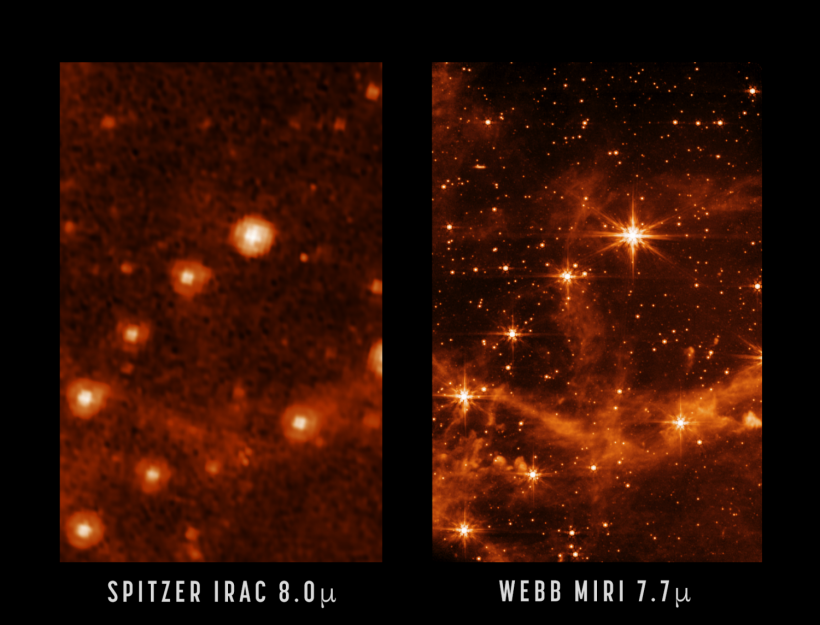Engineers have achieved near-perfect alignment of the NASA James Webb Space Telescope's complex optical system four and a half months after its Christmas Day launch, setting the way for final instrument calibrations and the publication of the first showcase science photos in July.
The team revealed that they are down to roughly 200 actions out of over 1,000 milestones the observatory has required to complete since launch to become fully operational. However, those 200 are all part of the last step of instrument commissioning.
"I call it the home stretch," said Michael McElwain, Webb observatory project scientist, in a media briefing (via Universe Today) on May 9. "There are 17 scientific modes we need to bring online in the next two months, and we need to demonstrate the telescope's operational capabilities before we are ready to turn the science instruments loose on the Universe."
The crew is currently delving into the intricacies of the scientific instruments to finish their commissioning. They'll take precise measurements of the research equipment's functioning over the following two months before starting normal science operations in the summer.

NASA’s James Webb Space Telescope is aligned across all four of its science instruments, as seen in a previous engineering image showing the observatory’s full field of view.
NASA James Webb Space Telescope in a Homestretch
The $10 billion space telescope has reached the "home stretch" of its commissioning work, according to NASA, and Webb's newest picture demonstrated the observatory's excellent performance utilizing its coldest instrument, the Mid-Infrared Instrument (MIRI).
In its finest vision, the MIRI picture revealed the chemistry of interstellar gas. According to Space.com, the emission from carbon and hydrogen molecules known as "polycyclic aromatic hydrocarbons" is one of life's building ingredients.
The improved picture of the Magellanic Cloud will allow scientists and professionals to investigate the processes of star and planet formation in a completely new setting, according to European Space Agency's observatory's project scientist Chris Evans.
This might lead them to the realization that each galaxy is generated differently.
Computer, enhance! Compare the same target — seen by Spitzer & in Webb’s calibration images. Spitzer, NASA's first infrared Great Observatory, led the way for Webb’s larger primary mirror & improved detectors to see the infrared sky with even more clarity: https://t.co/dIqEpp8hVi pic.twitter.com/g941Ug2rJ8
— NASA Webb Telescope (@NASAWebb) May 9, 2022
What is Next for JWST?
Scott Friedman, Webb's lead commissioning scientist, said that the final collection of commissioning activities includes things for each instrument as well as procedures for the entire observatory.
"We have operated [each instrument's] mechanisms and detectors, including filter wheels, grating wheels, and the NIRSpec microshutter assembly," said Friedman in a NASA blog post.
To align the observatory's primary and secondary mirrors, Friedman explained that the Webb optics team used pictures of single stars acquired with each of the instruments
However, he said there is still work to be done before Webb is completely prepared to begin the ambitious science observations that will expose the universe's mysteries.

NASA’s James Webb Space Telescope is aligned across all four of its science instruments, as seen in a previous engineering image showing the observatory’s full field of view.
The Webb optics team utilized pictures of single stars captured with each instrument to align the observatory's primary and secondary mirrors. However, many believe Webb needs more work before embarking on the ambitious science discoveries that will expose the universe's mysteries.
It comprises a comprehensive set of equipment calibrations and characterizations using astronomical sources to assess each instrument's capabilities and weaknesses.
They'll also undertake astrometric calibration on each instrument by looking at a small piece of sky in the nearby Large Magellanic Cloud and comparing the photos to prior views by other observatories, including the Hubble Space Telescope. More comparisons of the instruments' first views to other observatories may be found here.
RELATED ARTICLE: NASA Gets Major Milestone After Capturing Stunning Photo of Distant Single Star [LOOK]
Check out more news and information on Space in Science Times.










!['Cosmic Glitch' in Einstein's Theory of General Relativity Could Be Explained in This New Scientific Tweak [Study]](https://1721181113.rsc.cdn77.org/data/thumbs/full/53435/258/146/50/40/cosmic-glitch-in-einsteins-theory-of-general-relativity-could-be-explained-in-this-new-scientific-tweak-study.jpeg)



